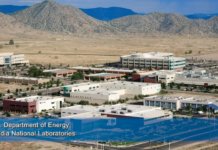The Smart Electric Power Alliance (SEPA) is releasing a new report aimed at providing utilities and distributed technology organizations with plans for working together on new energy market structures.
The report, “Blueprints for Energy Market Reform: Building a Structure for Collaborative Stakeholder Engagement,” represents a synthesis of the insights and ideas generated through SEPA’s 51st State Initiative, which the educational nonprofit launched at Solar Power International (SPI) in 2014.
The initiative’s goal, then and now, is to transcend contentious debates over net metering and rate reform by fostering new visions and roadmaps for market transition, as well as provide a platform for cross-industry collaboration and communication, according to SEPA.
“With the roles of utilities, customers and technology providers changing faster than ever before, it became clear to us that industry stakeholders need a new set of concepts and tools,” said Tanuj Deora, SEPA’s executive vice president and chief strategy officer.
The report includes the following concepts and tools:
- Four doctrines that can serve as a foundation for market reform conversations between utilities, solar and other technology providers, policymakers, customer groups, and other market participants;
- Roadmapping, a formal process for combining the conceptual common ground embodied in the four doctrines with a functional, feasible schedule; and
- FIAT, which stands for flexibility, incrementality, affordability and transparency. The FIAT concepts are part of the report’s practical guidelines for keeping stakeholder conversations focused and grounded in reality.
“By leveraging the ideas SEPA and the 51st State Initiative have developed, our hope is that any jurisdiction can take these blueprints and put them into action,” said Julia Hamm, president and CEO of SEPA. “One of the key messages coming out of SPI this year is that energy market transition is happening now, and all of us – utilities, solar organizations and policymakers – must stay focused on positive solutions that benefit customers and the grid.”
The free report is available here.




